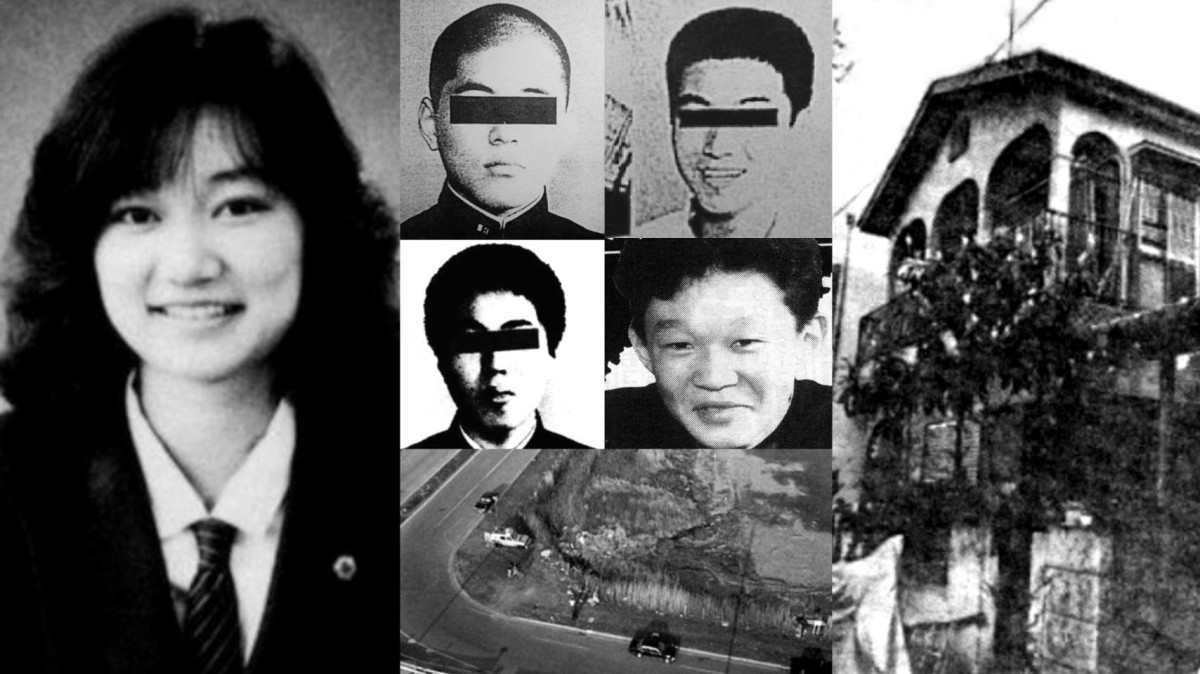Furuta Junko: Unveiling The Story That Shook Japan
When we talk about Furuta Junko, we're diving into a case that left an indelible mark on Japan's history. This is not just a story; it's a chilling reminder of humanity's darker side. The name Furuta Junko brings up a range of emotions, from shock to disbelief. It's a case that has been dissected, analyzed, and remembered for its brutality and the questions it raises about justice, morality, and human nature.
You might be wondering why this case is so significant. Well, it's not every day that a story captures the attention of an entire nation and prompts a reevaluation of laws and societal values. The Furuta Junko case did exactly that. It shook Japan to its core and forced people to confront some uncomfortable truths.
This article is here to break down the Furuta Junko case for you, offering insights, details, and the broader implications it had on Japanese society. We're going to explore the facts, the people involved, and the aftermath in a way that’s both informative and engaging. So, let's dive right in, shall we?
Read also:Deva Cassel Age Unveiling The Life Career And Legacy Of A Rising Star
Table of Contents
- Biography of Furuta Junko
- The Furuta Junko Case
- Key Players in the Case
- Legal Ramifications
- Societal Impact
- Media Coverage
- Lessons Learned
- Psychological Analysis
- International Reactions
- Conclusion
Biography of Furuta Junko
Who Was Furuta Junko?
Furuta Junko wasn’t just a name in the headlines; she was a 13-year-old girl whose life was tragically cut short in 1988. Born into a modest family in Japan, Junko was like any other teenager, with dreams, aspirations, and a life full of potential. But her story took a dark turn when she became the victim of a heinous crime that shocked the nation.
Let’s take a moment to remember Junko as more than just a victim. She was a bright student, known for her kindness and a love for art. Her friends and family described her as someone who always had a smile on her face and a helping hand for others. But unfortunately, her life was brutally cut short, leaving a void in the lives of those who knew her.
Biodata of Furuta Junko
| Full Name | Furuta Junko |
|---|---|
| Date of Birth | March 1975 |
| Place of Birth | Hokkaido, Japan |
| Date of Death | December 1988 |
| Age at Death | 13 years |
The Furuta Junko Case
The Furuta Junko case revolves around the events that took place in December 1988. Junko was abducted by a group of high school students who held her captive for 44 days. During this time, she endured unimaginable torture and abuse. The case gained national attention not just because of the brutality involved but also because of the young age of the perpetrators.
It’s hard to fathom how a group of teenagers could commit such a heinous act. But that’s exactly what happened, and the case became a symbol of the darker side of human nature. The details that emerged during the investigation were harrowing, and they prompted a nationwide discussion about the state of youth in Japan.
Key Players in the Case
The Perpetrators
The case involved four teenage boys, all of whom were classmates of Furuta Junko. They were aged between 15 and 16 at the time of the crime. The ringleader, identified only as "K," orchestrated the abduction and subsequent torture. The other boys, although not as active in the planning, participated in the abuse and failed to stop the atrocities.
- K: The mastermind behind the abduction and torture.
- T: A follower who participated in the abuse.
- M: Another accomplice who was present during the ordeal.
- H: The youngest of the group, who also took part in the crime.
Legal Ramifications
The legal proceedings that followed were nothing short of controversial. Given the age of the perpetrators, the Japanese justice system was faced with a dilemma. The boys were tried as juveniles, which meant they could not receive the maximum punishment allowed by law. This decision sparked outrage among the public, who demanded justice for Furuta Junko.
Read also:Brandon Lee Net Worth At Time Of Death Unveiling The Legacy And Wealth
Ultimately, the boys were sentenced to varying terms of imprisonment. K, the ringleader, received the harshest sentence, but it was still not enough to satisfy the public’s demand for justice. The case led to a reevaluation of Japan’s juvenile justice system and prompted changes in the law to address similar situations in the future.
Societal Impact
The Furuta Junko case had a profound impact on Japanese society. It forced people to confront uncomfortable truths about the state of youth, education, and family values. The case highlighted the importance of addressing mental health issues among teenagers and the need for better support systems.
It also raised questions about the role of the media in sensationalizing crime and the impact of peer pressure on young people. The case became a catalyst for change, leading to reforms in the education system and increased focus on mental health awareness.
Media Coverage
From the moment the case broke, the media played a significant role in shaping public perception. The coverage was extensive, with newspapers, television, and radio stations providing updates on the investigation and trial. However, the media’s portrayal of the case was not without controversy.
Some argued that the media sensationalized the crime, focusing more on the shocking details than on the broader implications. Others believed that the coverage was necessary to bring attention to the issues at hand and to ensure that justice was served.
Lessons Learned
The Furuta Junko case taught us many lessons, both individually and as a society. It highlighted the importance of empathy, understanding, and the need for a supportive community. It also underscored the importance of addressing mental health issues early on and providing adequate support for those in need.
For parents and educators, the case was a wake-up call to be more vigilant and proactive in identifying signs of trouble among young people. It served as a reminder that the actions of a few can have a lasting impact on many.
Psychological Analysis
Psychologists and criminologists have long debated the motives behind the Furuta Junko case. What drives a group of teenagers to commit such a heinous act? Theories range from a lack of empathy and moral compass to the influence of peer pressure and societal factors.
One prevailing theory suggests that the boys were seeking attention and validation from their peers. In a society that places a high value on conformity, standing out in any way can be a powerful motivator, even if it means committing a crime. Others argue that the boys were influenced by violent media and lacked proper guidance from adults.
International Reactions
The Furuta Junko case did not go unnoticed by the international community. It sparked discussions about juvenile justice systems worldwide and the need for a more compassionate approach to dealing with young offenders. Many countries looked to Japan’s response as a case study in how to handle such situations.
International human rights organizations also weighed in, calling for reforms in the way juvenile offenders are treated. They emphasized the importance of rehabilitation over punishment, especially for young people whose brains are still developing.
Conclusion
The Furuta Junko case remains one of the most shocking and tragic events in Japan’s history. It serves as a reminder of the importance of empathy, understanding, and the need for a supportive community. While the case brought pain and sorrow, it also led to positive changes in the way society addresses issues affecting young people.
We encourage you to reflect on the lessons learned from this case and consider how we can create a better, more compassionate world for future generations. Share your thoughts in the comments below, and don’t forget to check out our other articles for more insights into important topics.
Remember, every voice matters, and every action can make a difference. Let’s work together to build a brighter future for all.



